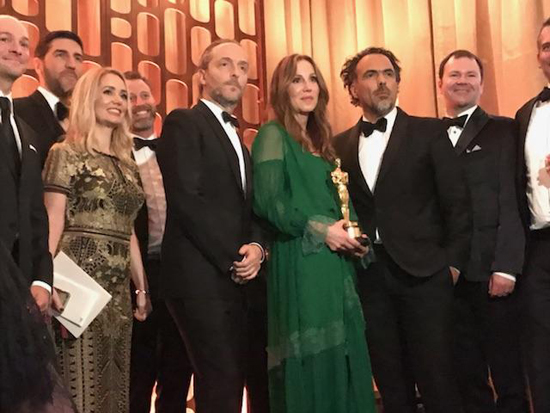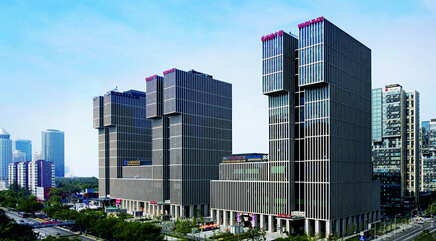Legendary Pictures’ VR Installation Wins Special Oscar
11.11.2017 Legendary Entertainment’ Vice Chairman Mary Parent, director Alejandro G. Iñarritu, and a cinematographer Emanuel Lubezki take a photo at the Annual Governors Awards.
Legendary Entertainment’ Vice Chairman Mary Parent, director Alejandro G. Iñarritu, and a cinematographer Emanuel Lubezki take a photo at the Annual Governors Awards.
 Director Alejandro G. Iñarritu addresses at the Annual Governors Awards.On November 11, “Carne y Arena (Virtually Present, Physically Invisible)”, a VR installation funded and presented by Legendary Pictures of Dalian Wanda Group, was awarded a Special Award, an Oscar statuette, making it the first Oscar-winning VR installation.
Director Alejandro G. Iñarritu addresses at the Annual Governors Awards.On November 11, “Carne y Arena (Virtually Present, Physically Invisible)”, a VR installation funded and presented by Legendary Pictures of Dalian Wanda Group, was awarded a Special Award, an Oscar statuette, making it the first Oscar-winning VR installation.
“Carne y Arena” changes the way audiences watching films and is of revolutionary significance in the history of world film. John Bailey, President of Academy of Motion Picture Arts and Sciences, praised that “it opens for us new doors of cinematic perception.”
As one of the Academy Awards, Special Honorary Oscar is awarded to outstanding works that make remarkable contributions to the film industry but cannot be classified. Previously Special Honorary Oscar winners include “Star Trek” (1977), “Superman” (1978), “Star Wars: Episode V - The Empire Strikes Back” (1980), “Raiders of the Lost Ark” (1981), “Toy Story” (1996), etc.
“Carne y Arena”, produced by Legendary Entertainment’ Vice Chairman Mary Parent, is an official selection from a four-time Oscar winning director, Alejandro G. Iñarritu, and a three-time winning cinematographer Emanuel Lubezki, and takes on the plight of immigrants trying to cross the US-Mexico border for a better life in America. It made a stir when it premiered in Cannes this May, and was perceived as a piece of milestone works of the virtual reality.
“Carne y Arena” had a cutting-edge exploration towards the motion picture techniques, changed the interactive mode between the audiences and director, and achieved impressive results. It is reported that this 7-minute VR installation can even compare with the 131-minute “Pacific Rim” in total data and technical strength. In “Carne y Arena”, each of the 16 roles has his/her own story line. The audience wearing VR helmet may follow any one of these characters in the scenario to watch and experience. In the process, the audience’s shadow will change as the position moves. They may experience the breeze, texture of cloths, and the heartbeat. “Carne y Arena” blurs the boundary between the audience and the film itself, making the audience a part of it to enjoy the immersive experience.
“Carne y Arena” is on display at the Los Angeles County Museum of Art, Fondazione Prada in Milan, and Tlatelolco Cultural Center in Mexico City. Wanda Group plans to introduce “Carne y Arena” to China so that Chinese audience will have the opportunity to get the stunning experience brought by this high-tech film.






